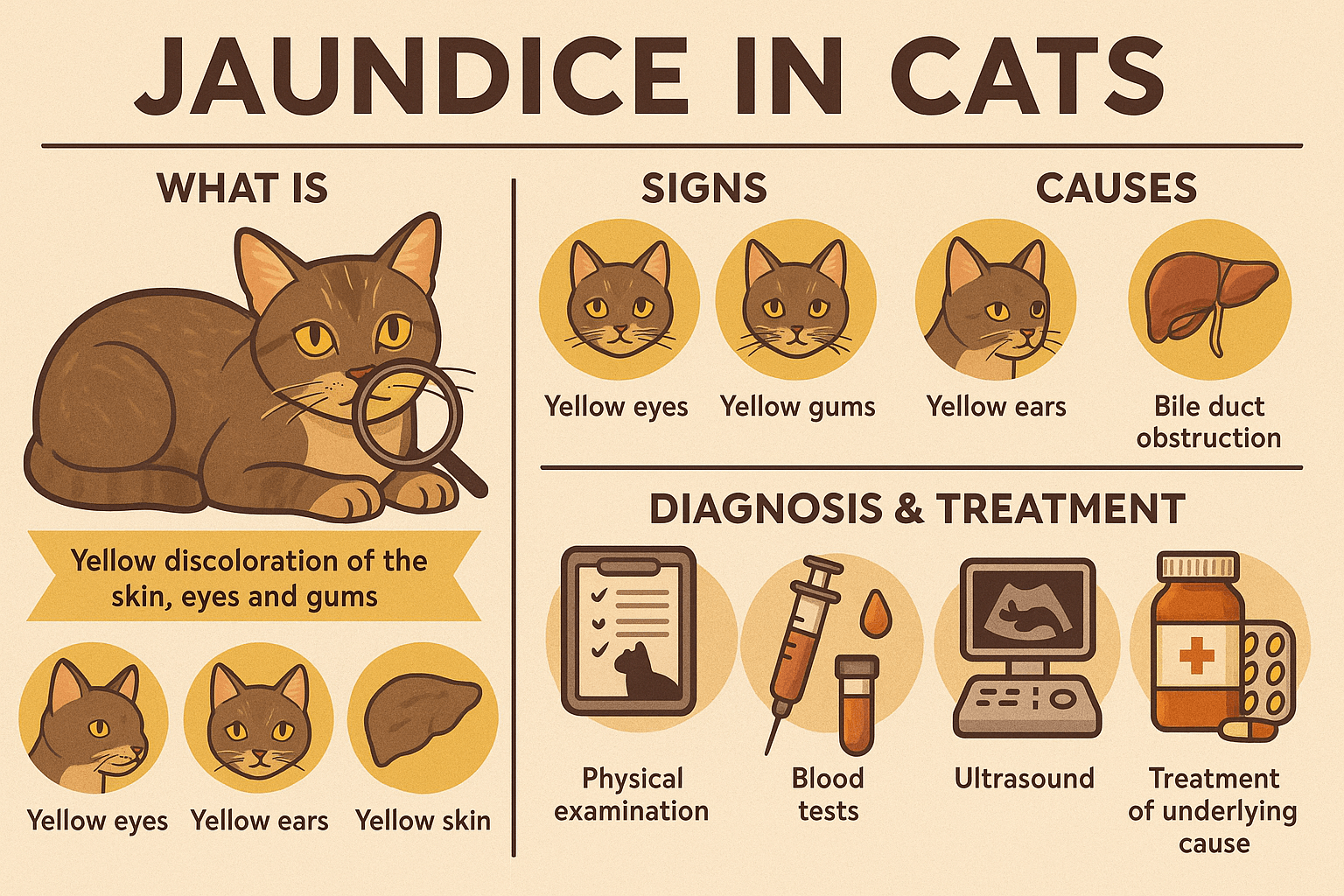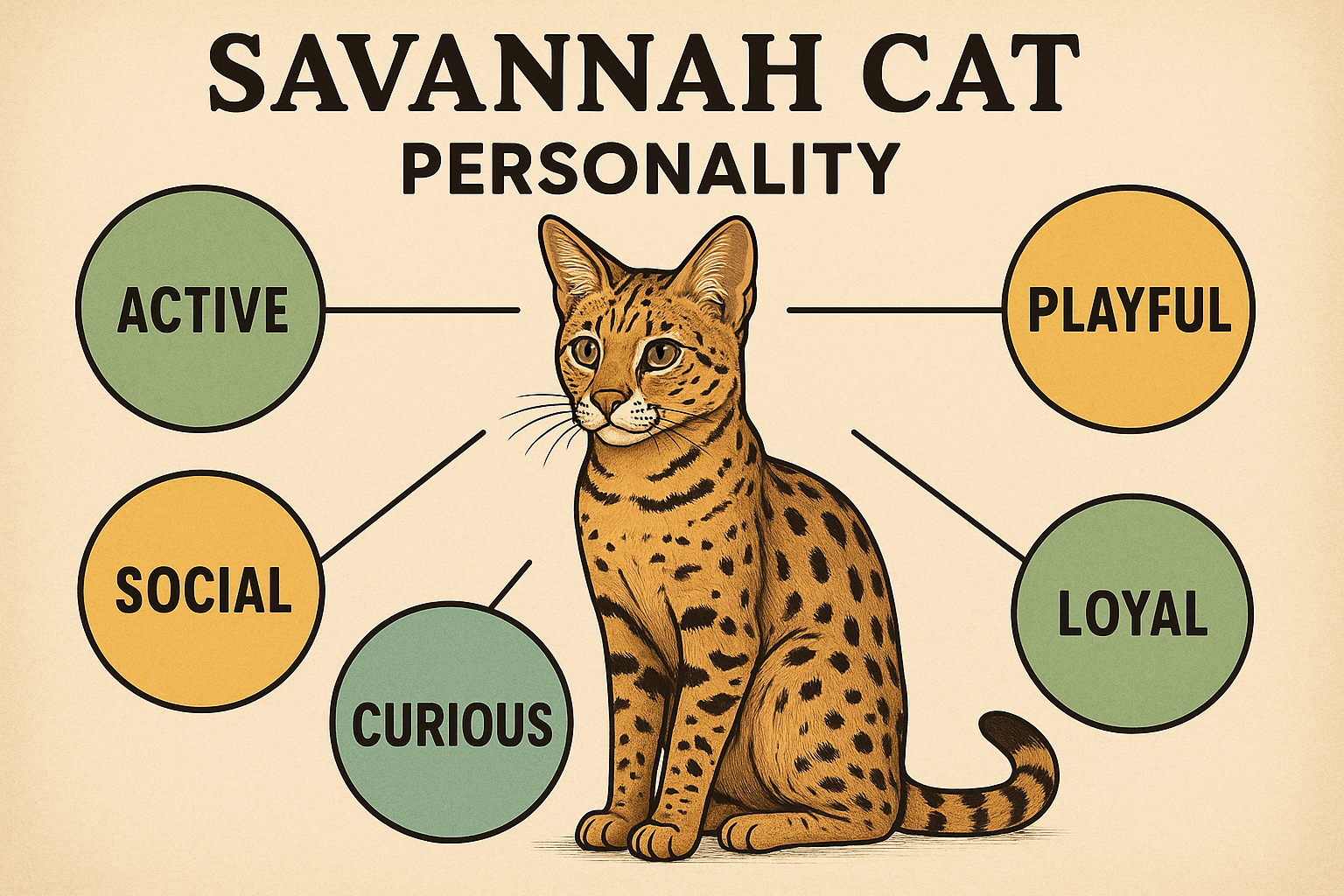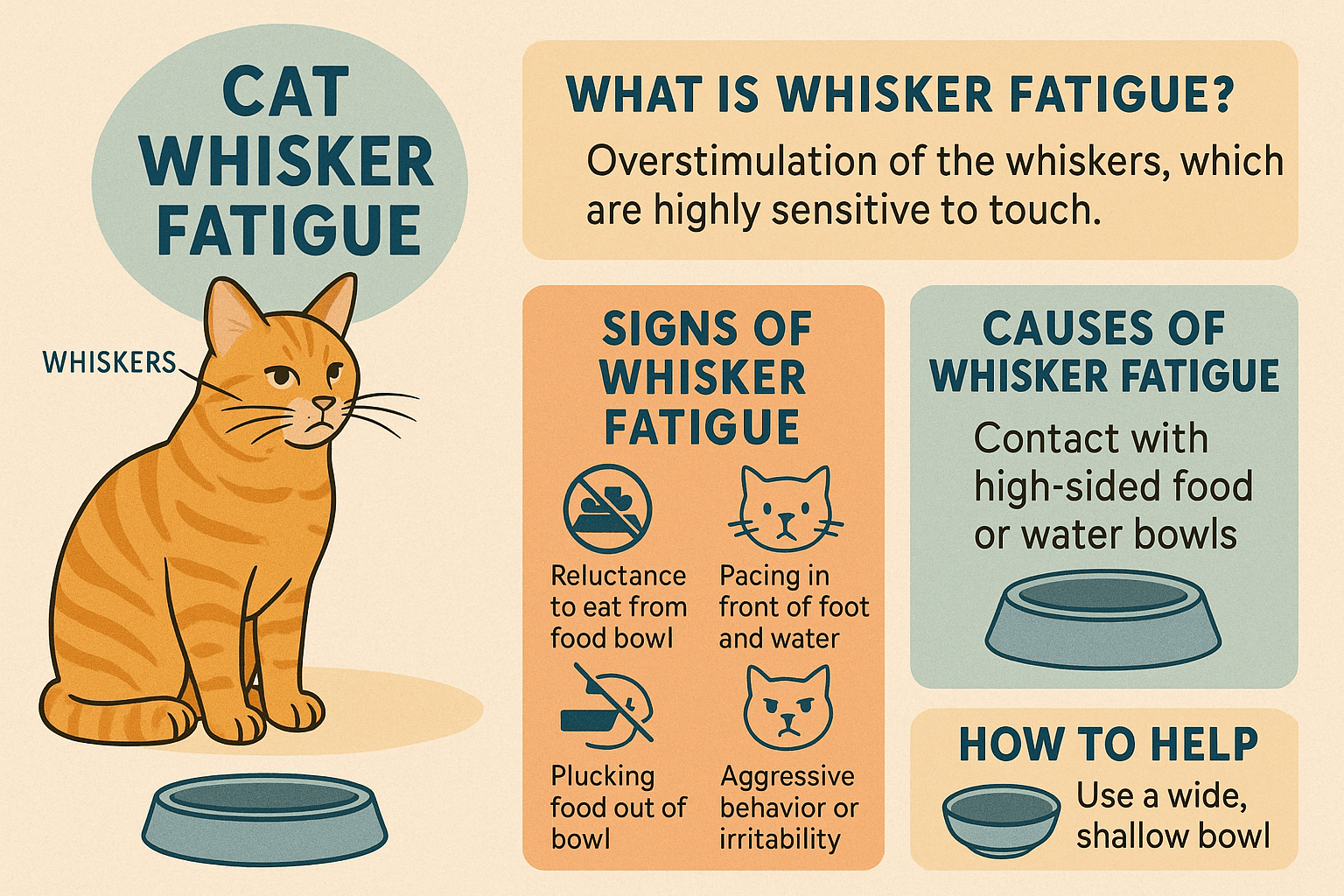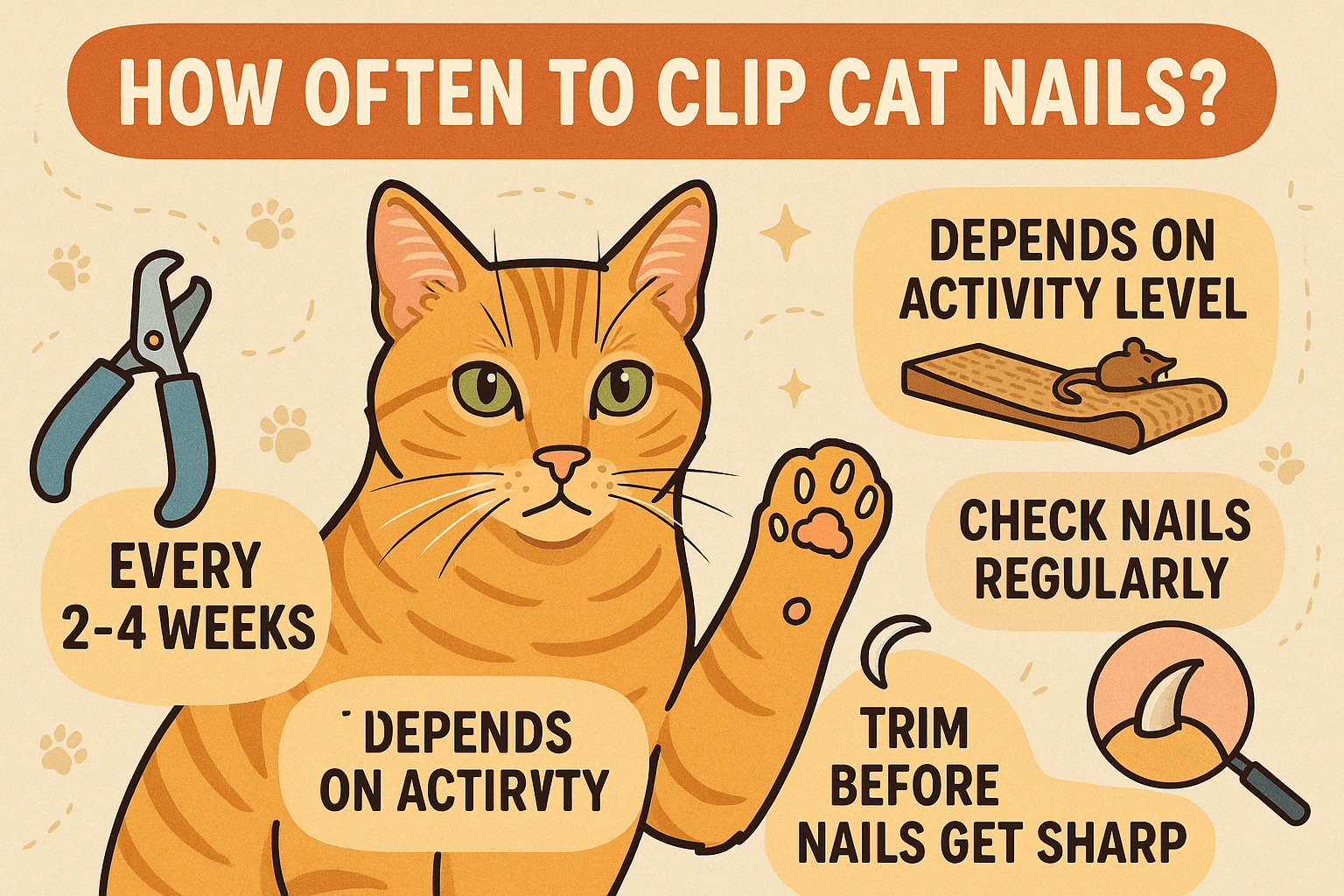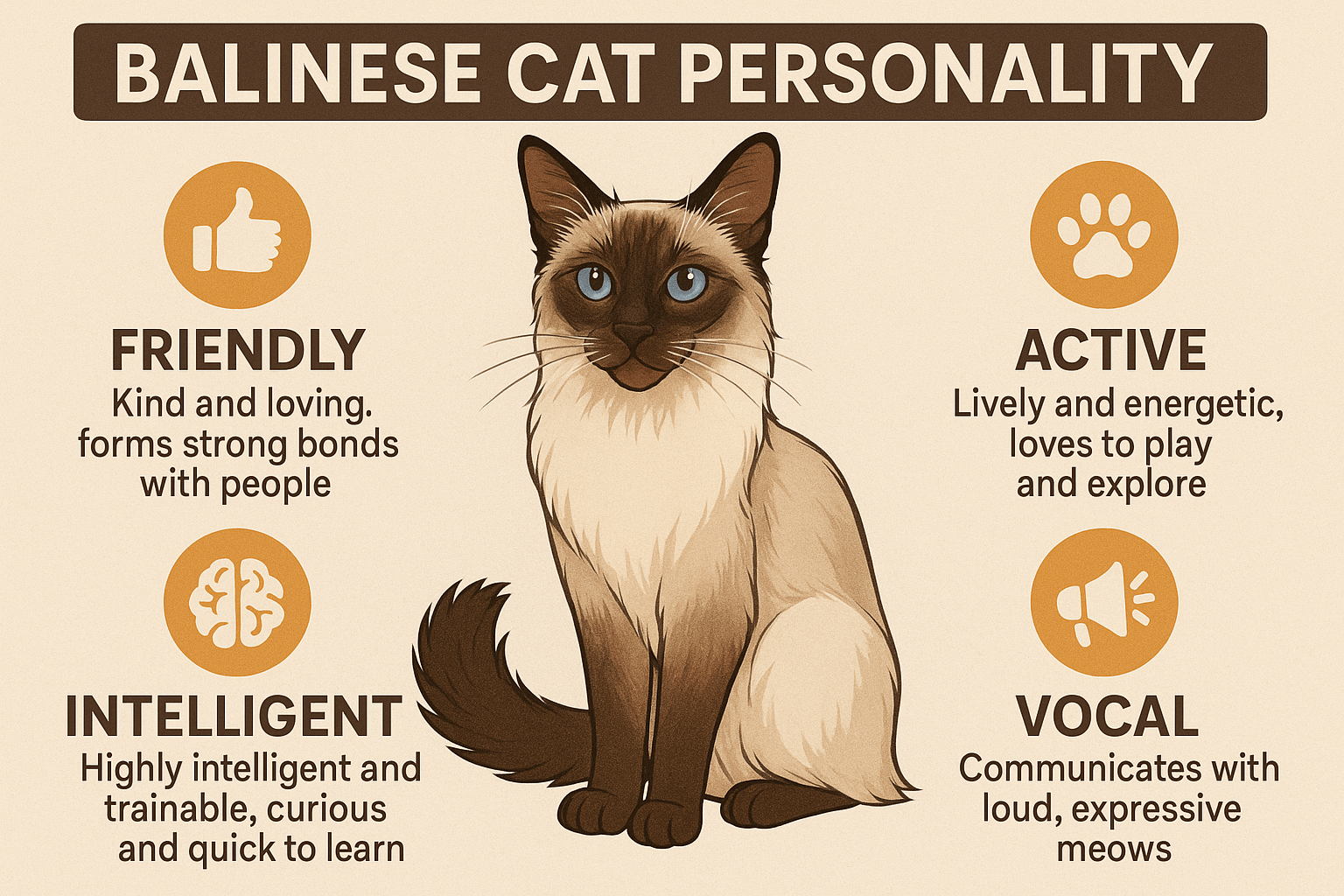Understanding Jaundice in Cats: Causes, Symptoms, and Treatment
Jaundice, also known as icterus, is a condition that causes a yellowing of the skin, gums, and whites of the eyes in cats. This alarming symptom often signals an underlying health issue affecting the liver, bile ducts, or red blood cells. While jaundice itself is not a disease, it serves as a critical warning sign that something is amiss within your cat’s body. Early detection and proper veterinary care are essential to addressing the root cause and ensuring your feline friend’s recovery. In this article, we’ll explore the causes, symptoms, and treatment options for jaundice in cats, empowering you with the knowledge needed to protect your pet’s health.
Common Causes of Jaundice in Cats
Jaundice occurs when there is an excess buildup of bilirubin, a yellow pigment produced during the breakdown of red blood cells. Understanding the potential causes can help identify the underlying issue quickly.
Liver Disease:
Conditions like hepatitis, fatty liver disease, or liver cancer can impair the liver’s ability to process bilirubin effectively.Bile Duct Obstruction:
Blockages in the bile duct prevent bilirubin from being excreted into the intestines, leading to its accumulation in the bloodstream.Hemolytic Anemia:
The destruction of red blood cells at an accelerated rate produces excessive bilirubin, overwhelming the liver’s capacity to process it.Infections:
Bacterial, viral, or parasitic infections can damage the liver or trigger immune-mediated hemolysis, contributing to jaundice.Toxic Exposure:
Ingestion of toxins such as certain plants, medications, or chemicals can harm the liver and disrupt bilirubin metabolism.
Identifying the specific cause of jaundice is crucial for determining the appropriate treatment plan and improving your cat’s prognosis.
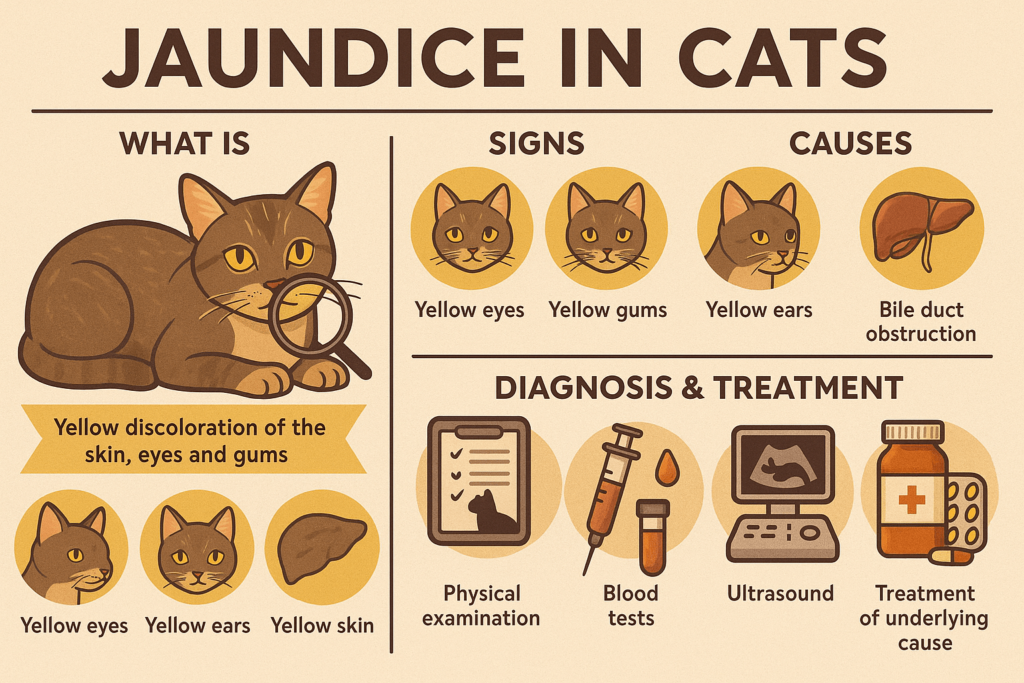
Signs and Symptoms of Jaundice in Cats
Recognizing the early signs of jaundice can make a significant difference in your cat’s recovery. Look out for these key symptoms that may indicate your feline companion needs immediate veterinary attention.
Yellowing of Skin and Gums:
The most obvious sign of jaundice is the yellow discoloration of the skin, gums, and the whites of the eyes.Lethargy and Weakness:
Cats with jaundice often appear unusually tired, reluctant to move, or less interested in their surroundings.Loss of Appetite:
A sudden disinterest in food or refusal to eat is a common indicator of underlying health issues, including jaundice.Vomiting or Diarrhea:
Digestive disturbances such as vomiting or diarrhea may accompany jaundice due to liver dysfunction or other systemic problems.Dark Urine or Pale Stools:
Dark urine and pale or clay-colored stools can signal issues with bilirubin processing and excretion.
If you notice any of these symptoms, consult your veterinarian promptly to determine the underlying cause and begin treatment.
Check this guide 👉Understanding Cat Skin Cancer: Best 7 Expert Tips!
Check this guide 👉Understanding Cat Skin Conditions: Best 7 Health Tips!
Check this guide 👉Dry Skin on Cats: Best 7 Expert Tips!
Causes of Jaundice in Cats | Treatment Options for Jaundice |
|---|---|
Liver disease (hepatitis, cirrhosis) | Medications to support liver function |
Bile duct obstruction | Surgery to remove blockages |
Hemolytic anemia | Blood transfusions or immunosuppressants |
Infections (bacterial, viral, parasitic) | Antibiotics or antiviral treatments |
Toxic exposure | Detoxification therapies and supportive care |
Diagnostic Process for Jaundice in Cats
Diagnosing jaundice involves a thorough evaluation by a veterinarian to pinpoint the underlying cause. Here’s what you can expect during the diagnostic process.
Physical Examination:
Your vet will check for visible signs of jaundice, such as yellowing of the gums and eyes, and assess your cat’s overall condition.Blood Tests:
Complete blood count (CBC) and serum biochemistry panels help evaluate liver function, detect anemia, and identify abnormalities.Urine Analysis:
Analyzing urine samples can reveal elevated levels of bilirubin or other substances indicative of liver or kidney issues.Imaging Studies:
Ultrasound or X-rays may be used to examine the liver, bile ducts, and surrounding organs for structural abnormalities or obstructions.Biopsy (if necessary):
In some cases, a liver biopsy may be required to diagnose specific conditions like cancer or advanced liver disease.
Accurate diagnosis is essential for tailoring an effective treatment plan that addresses the root cause of jaundice.
Home Care Tips for Managing Jaundice in Cats
While professional veterinary care is paramount, there are steps you can take at home to support your cat’s recovery and overall well-being.
Provide a Quiet Environment:
Create a calm and stress-free space where your cat can rest and recover without disturbance.Offer Nutritious Food:
Serve small portions of easily digestible, high-quality food to encourage eating and support liver health.Monitor Water Intake:
Ensure your cat stays hydrated, as dehydration can worsen liver-related complications.Administer Medications as Directed:
Follow your veterinarian’s instructions carefully when giving prescribed medications or supplements.Watch for Changes in Symptoms:
Keep an eye on your cat’s behavior and report any new or worsening symptoms to your vet immediately.
By providing attentive care at home, you can complement your cat’s treatment and improve their chances of recovery.
Preventative Measures to Avoid Jaundice
Preventing jaundice in cats starts with proactive care and awareness of potential risk factors. Here are some strategies to reduce the likelihood of your cat developing this condition.
Regular Veterinary Check-Ups:
Routine exams help detect early signs of liver disease or other health issues before they progress.Avoid Exposure to Toxins:
Keep toxic plants, chemicals, and medications out of reach to prevent accidental ingestion.Maintain a Healthy Diet:
Feed your cat a balanced diet rich in nutrients to support liver health and overall well-being.Monitor for Parasites:
Regular deworming and flea prevention reduce the risk of infections that could lead to jaundice.Encourage Hydration:
Provide fresh water daily to keep your cat hydrated and support kidney and liver function.
Taking these preventative steps can significantly lower the risk of jaundice and promote long-term health for your cat.
Common Misconceptions About Jaundice
There are several misconceptions about jaundice in cats that can lead to confusion or delayed treatment. Clarifying these myths helps ensure better care for your pet.
Myth: Jaundice Only Affects Older Cats:
While senior cats are more prone to liver issues, younger cats can also develop jaundice due to infections or toxins.Myth: Yellow Eyes Always Mean Jaundice:
Other conditions, like anemia, can cause similar symptoms, so professional diagnosis is essential.Myth: Jaundice Is Contagious:
Jaundice itself is not contagious, though infectious diseases causing it may be transmissible.Myth: Diet Alone Can Cure Jaundice:
While nutrition plays a role, medical intervention is usually necessary to address the underlying cause.Myth: Jaundice Is Always Fatal:
With timely treatment, many cats recover fully and live happy, healthy lives.
Understanding the truth behind these misconceptions ensures informed decisions about your cat’s health.
Emotional Support for Owners
Caring for a cat with jaundice can be emotionally challenging for pet owners. Here are some tips to help you navigate this difficult time while staying strong for your furry friend.
Educate Yourself About the Condition:
Learning about jaundice reduces anxiety and empowers you to make informed decisions about your cat’s care.Seek Support from Friends or Family:
Share your concerns with loved ones who understand your bond with your pet and can offer encouragement.Join Online Communities:
Connecting with other cat owners facing similar challenges can provide comfort and practical advice.Practice Self-Care:
Taking care of yourself ensures you have the energy and emotional resilience to care for your cat.Celebrate Small Wins:
Acknowledge milestones in your cat’s recovery journey, no matter how small, to stay motivated and hopeful.
By prioritizing your own well-being, you can remain a source of strength and love for your cat throughout their recovery.
Frequently Asked Questions About Jaundice in Cats
What does jaundice look like in cats?
Jaundice appears as yellowing of the skin, gums, and the whites of the eyes.
Is jaundice in cats treatable?
Yes, treatment depends on the underlying cause but often includes medications, dietary changes, or surgery.
Can diet help manage jaundice?
A balanced, liver-friendly diet can support recovery, but always consult your vet before making changes.
How long does it take for a cat to recover from jaundice?
Recovery time varies based on the cause and severity of the condition but may range from weeks to months.
What should I do if my cat stops eating?
Contact your vet immediately, as prolonged appetite loss can worsen liver function and overall health.
Supporting Your Cat Through Jaundice
Jaundice in cats is a serious condition that requires prompt attention and proper care. By understanding its causes, recognizing the symptoms, and working closely with your veterinarian, you can ensure your cat receives the best possible treatment. With patience, dedication, and a supportive home environment, many cats with jaundice can recover and regain their vitality. Remember, your vigilance and love play a vital role in helping your feline companion overcome this challenging health issue.
Savannah Cat Personality: Best 7 Expert Tips! Discover the unique traits, care needs, and expert advice for understanding and bonding with your energetic, intelligent Savannah cat.
Understanding Cat Whisker Fatigue: Best 7 Expert Tips! Discover causes, signs, and solutions for whisker fatigue to keep your cat comfortable and stress-free with expert advice.
How Often to Clip Cat Nails: Best 7 Expert Tips! Discover expert advice on trimming cat nails, maintaining paw health, and keeping your home scratch-free with simple, actionable tips.
Balinese Cat Personality: Best 7 Expert Tips! Discover the playful, affectionate, and intelligent traits of Balinese cats and learn how to care for their unique needs with expert advice.

